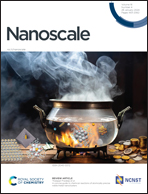ICAM-1 targeted and ROS-responsive nanoparticles for the treatment of acute lung injury†
Abstract
Acute lung injury (ALI) is an inflammatory disease caused by multiple factors such as infection, trauma, and chemicals. Without effective intervention during the early stages, it usually quickly progresses to acute respiratory distress syndrome (ARDS). Since ordinary pharmaceutical preparations cannot precisely target the lungs, their clinical application is limited. In response, we constructed a γ3 peptide-decorated and ROS-responsive nanoparticle system encapsulating therapeutic dexamethasone (Dex/PSB-γ3 NPs). In vitro, Dex/PSB-γ3 NPs had rapid H2O2 responsiveness, low cytotoxicity, and strong intracellular ROS removal capacity. In a mouse model of ALI, Dex/PSB-γ3 NPs accumulated at the injured lung rapidly, alleviating pulmonary edema and cytokine levels significantly. The modification of NPs by γ3 peptide achieved highly specific positioning of NPs in the inflammatory area. The ROS-responsive release mechanism ensured the rapid release of therapeutic dexamethasone at the inflammatory site. This combined approach improves treatment accuracy, and drug bioavailability, and effectively inhibits inflammation progression. Our study could effectively reduce the risk of ALI progressing to ARDS and hold potential for the early treatment of ALI.



 Please wait while we load your content...
Please wait while we load your content...